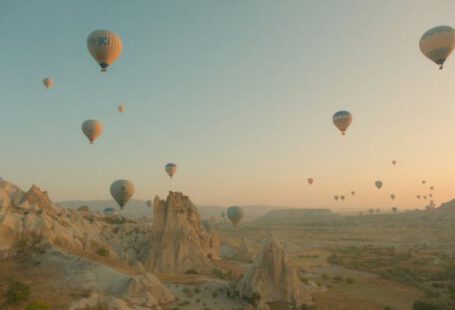Cappadocia, located in central Turkey, is renowned for its otherworldly landscapes, which have captivated travelers for centuries. The region’s unique geological formations, known as fairy chimneys, along with its ancient cave dwellings, make it a UNESCO World Heritage site and a popular tourist destination. However, with increasing visitor numbers and the threat of environmental degradation, conservation efforts have become crucial to protect Cappadocia’s natural wonders for future generations.
Preserving the Fairy Chimneys
One of the most iconic features of Cappadocia is its fairy chimneys, tall, cone-shaped rock formations that dot the landscape. These fairy chimneys are the result of volcanic activity and erosion over millions of years. However, they are not impervious to human interference.
To safeguard these natural wonders, local authorities have implemented strict regulations to control construction and development near the fairy chimneys. This ensures that the structures remain untouched and that the landscape retains its unique character. Additionally, designated pathways and viewing platforms have been created to prevent visitors from venturing off-trail and causing damage.
Protecting the Cave Dwellings
Cappadocia is also famous for its ancient cave dwellings, which were carved into the soft volcanic rock by early Christian communities. These caves served as homes, churches, and even underground cities. Today, they offer a glimpse into the region’s rich history and cultural heritage. However, these delicate structures require careful preservation.
Conservation efforts include regular monitoring of the caves’ structural integrity and implementing measures to prevent erosion and deterioration. This involves limiting visitor access to certain areas and providing guided tours to ensure that visitors remain respectful of their surroundings. Additionally, ongoing restoration projects are undertaken to repair any damage caused by previous generations or natural causes.
Promoting Sustainable Tourism
The increasing popularity of Cappadocia as a tourist destination has brought both economic benefits and environmental challenges. To strike a balance between tourism and conservation, sustainable tourism practices are being encouraged.
Local communities and tour operators are actively involved in promoting responsible tourism. This includes educating visitors about the importance of preserving the natural and cultural heritage of Cappadocia. Tourists are encouraged to support local businesses, respect the environment, and follow designated trails to minimize their impact on the fragile ecosystem.
Furthermore, initiatives such as waste management and recycling programs have been implemented to mitigate the environmental footprint of tourism activities. By reducing waste and promoting sustainable practices, Cappadocia aims to preserve its natural wonders while still welcoming visitors.
Collaboration with Local Communities
Conservation efforts in Cappadocia are not solely the responsibility of government bodies and environmental organizations. The involvement of local communities is crucial in ensuring the success of these initiatives.
Local residents, who have a deep connection to the land, play a vital role in preserving Cappadocia’s natural wonders. They act as stewards of the environment, sharing their knowledge and passion for the region with visitors. Additionally, community-led projects, such as the restoration of traditional cave houses, help to maintain the cultural heritage while providing economic opportunities for the locals.
Looking Towards the Future
As the popularity of Cappadocia continues to grow, the conservation efforts must adapt and evolve to meet new challenges. It is imperative to strike a balance between preserving the natural wonders and providing a unique and memorable experience for visitors.
Ongoing research and monitoring are essential to understand the long-term impact of tourism on the ecosystem and cultural heritage of Cappadocia. This information will guide future conservation efforts and ensure the sustainable development of the region.
Conclusion
Preserving Cappadocia’s natural wonders requires a collaborative effort between local communities, tourists, and authorities. Through strict regulations, sustainable tourism practices, and community involvement, Cappadocia can continue to enchant visitors while safeguarding its unique geological formations and ancient cave dwellings. By taking these conservation efforts seriously, Cappadocia ensures that future generations can experience the magic of this extraordinary destination.





